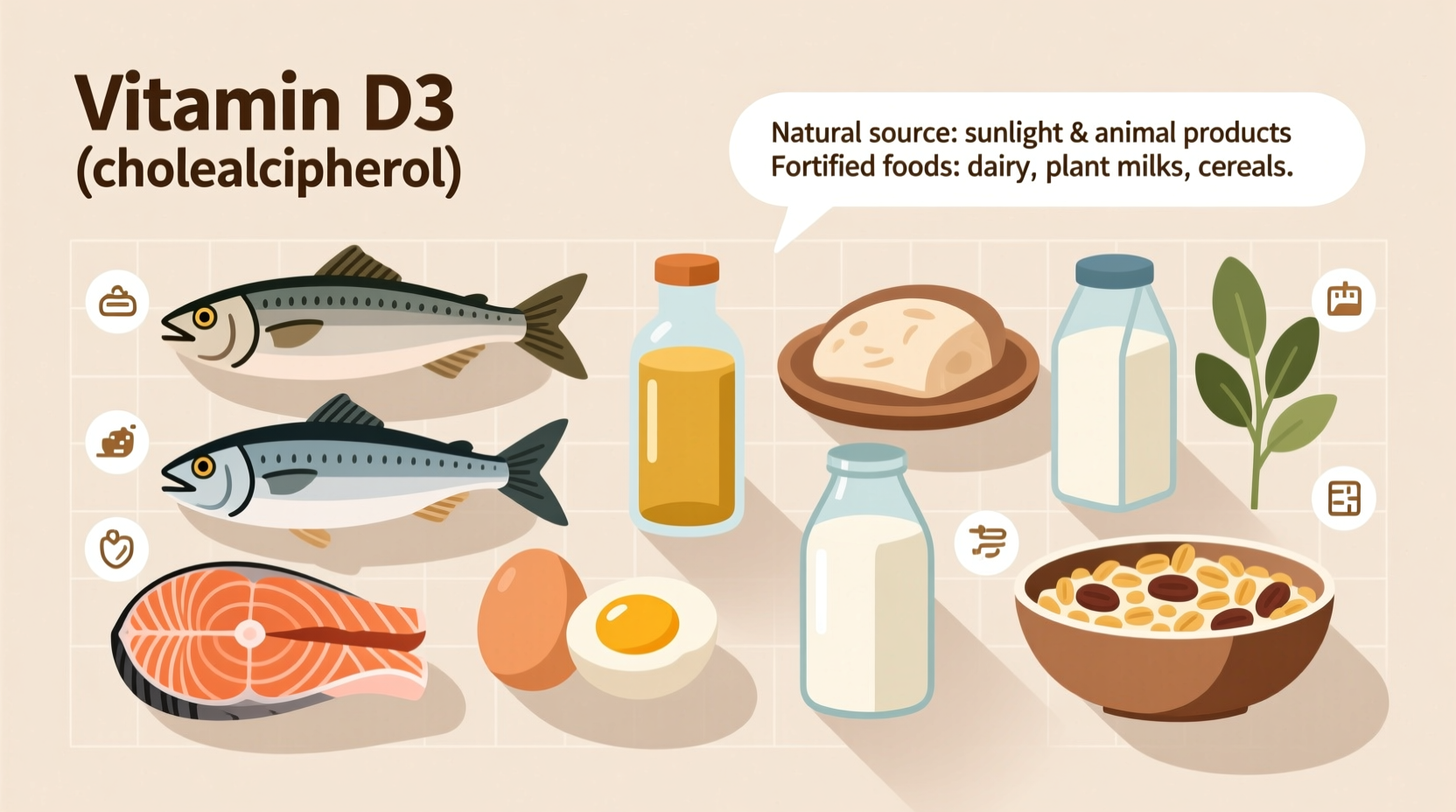Vitamin D3 (cholecalciferol) occurs naturally in only a few foods: fatty fish like salmon and mackerel, fish liver oils, egg yolks, and UV-exposed mushrooms. Fortified foods—including milk, plant-based milks, cereals, and orange juice—provide the most accessible dietary sources for most people.
Discover exactly which foods deliver meaningful vitamin D3 amounts, how much you actually need, and practical ways to incorporate these sources into your daily meals. This evidence-based guide cuts through common misconceptions and delivers actionable nutrition strategies backed by current research.
Your Complete Roadmap to Dietary Vitamin D3 Sources
Understanding vitamin D3 sources goes beyond simple lists—it's about making informed choices that fit your lifestyle. Whether you're addressing a deficiency, following dietary restrictions, or optimizing your nutrition, knowing precisely which foods contain usable D3 matters for bone health, immune function, and overall wellness.
Why Natural Vitamin D3 Sources Are Limited
Unlike vitamin D2 (ergocalciferol) found in some plants and fungi, D3 primarily comes from animal sources and sunlight exposure. Your body produces D3 when skin is exposed to UVB rays, but modern lifestyles often limit this natural production. This biological reality explains why few foods naturally contain significant D3 amounts.
| Food Source | Vitamin D3 Content (IU per serving) | % Daily Value* |
|---|---|---|
| Sockeye salmon (3 oz cooked) | 570 | 71% |
| Mackerel (3 oz cooked) | 388 | 49% |
| Sardines (3 oz canned) | 272 | 34% |
| Egg yolk (1 large) | 44 | 6% |
| Fortified cow's milk (1 cup) | 120 | 15% |
| Fortified orange juice (1 cup) | 100 | 13% |
*Based on 800 IU daily value recommendation from the National Academy of Medicine. Actual needs vary by age, skin tone, location, and health status.
Fatty Fish: The Most Potent Natural Sources
Fatty fish stand out as the richest natural D3 sources. Wild-caught salmon typically contains more D3 than farmed varieties due to their natural diet. Cod liver oil remains one of the most concentrated sources, providing approximately 1,360 IU per tablespoon. However, consistent fish consumption faces practical limitations—mercury concerns, sustainability issues, and dietary preferences restrict how much many people can realistically consume.

Understanding Fortified Food Options
Most Americans obtain vitamin D3 through fortified foods rather than natural sources. Since the 1930s, milk fortification has helped combat rickets, but not all dairy alternatives receive equal treatment. Check labels carefully—while most cow's milk contains added D3, many plant-based milks use D2 instead. The FDA requires fortified foods to list vitamin D content, but doesn't mandate specifying D2 versus D3 forms, creating potential confusion for consumers.
Vegetarian and Vegan Considerations
True vegetarian D3 sources are extremely limited. Standard mushrooms contain D2, not D3. However, UV-exposed mushrooms (labeled as "high vitamin D" varieties) can provide meaningful D3 amounts—up to 400 IU per 3-ounce serving when properly treated. Some specialty vegan products now use lichen-derived D3, but these remain less common than D2-fortified alternatives. This distinction matters because research suggests D3 raises blood levels more effectively than D2.
Practical Integration Strategies
Maximize your dietary D3 intake with these evidence-based approaches:
- Combine fortified foods: Pair fortified cereal with fortified plant milk for breakfast
- Choose D3-fortified options: Select brands specifying "vitamin D3" on labels
- Enhance absorption: Consume D3 sources with healthy fats (avocado, olive oil)
- Seasonal planning: Increase fortified food consumption during winter months
- Smart supplementation: Consider D3 supplements when dietary intake falls short
Important Contextual Limitations
Dietary sources alone often prove insufficient for maintaining optimal vitamin D status. The National Health and Nutrition Examination Survey reveals that nearly 95% of Americans don't meet recommended vitamin D intake through food alone. Sun exposure variables—latitude, season, skin pigmentation, sunscreen use—further complicate natural production. Individuals with darker skin tones require significantly longer sun exposure to produce equivalent D3 amounts as lighter-skinned individuals, creating health disparity considerations.
When Food Sources Aren't Enough
For many people, especially those living above 37° latitude, during winter months, or with limited sun exposure, supplements become necessary. The Endocrine Society recommends 1,500-2,000 IU daily for adults to maintain blood levels above 30 ng/mL. Always consult your healthcare provider before starting supplementation, as excessive intake can cause health complications. Regular blood testing provides the only accurate assessment of your vitamin D status.











 浙公网安备
33010002000092号
浙公网安备
33010002000092号 浙B2-20120091-4
浙B2-20120091-4